If you are a Shared Services Manager, you should be looking to optimize your supply chain working capital. The same goes for those in Supply Chain, Accounts Payable, or Treasury. Your goals are to move to electronic payment methods while extending Days Payable Outstanding (DPO) and capturing discounts on your payments.
The two excellent technologies that are capturing the most attention today are Supply Chain Finance (SCF) and Dynamic Discounting (DD).
SUPPLY CHAIN FINANCE
Supply Chain Finance (SCF) is best suited for your largest vendors. The process involves a third party for the financing and thus, the discussion is better suited for larger vendors because the vendor engagement process is somewhat more complex. SCF typically consists of a source of funds and a technology provider. The source of funds (banks, hedge funds, etc.) may be behind the scenes so that may transparent to your vendor. The buyer sends the vendor remittance information to the FI who notifies the vendor that approved invoices are available for payment. The FI then pays the vendor based on the terms previously negotiated. The FI then invoices the buyer for the invoices paid.
The primary financial benefits to the buyer are the discounts earned, some float depending on the payment arrangements, and an increase in Days Cash on Hand (DCOH) in the amount of the balance due to the FI at period end. Also, this is a rapidly growing and changing area of finance and processes are continually improving.
The buyer must establish a payment process and payment run for the SCF vendors. They must establish processes to transition vendors to the SCF process. The buyer must work with the FI to provide them vendor information for use in vendor enrollment. The buyer must also provide whatever other reasonable support the FI might require. The key element here is that the FI will likely be participative in these processes.
The summary is that with executive buy in, buyer support of the process, and modest process changes, organizations can get much of their large vendor spend going through this process. Also, as the technology is rapidly changing and not fully evolved at this point, these processes are improving rapidly. SCF is very well suited to vendors with extended terms, high dollar volumes, and has a discount that typically varies across suppliers, invoices and payment terms.
DYNAMIC DISCOUNTING
Dynamic Discounting (DD) is well suited for all of your vendors. DD typically consists of the buyer acting as the source of funds and a technology provider. The buyer uses the technology to send the vendor detailed information of approved invoices available for payment. The vendor can then access the funds based on the terms previously negotiated with the buyer. The buyer and or the technology provider may be doing the negotiations with suppliers.
The primary financial benefits to the buyer are the full discounts earned. There is no float or increase in Days Cash on Hand (DCOH, but all discounts are earned in full by the buyer. Also, this area is a rapidly growing and changing area of finance and processes are continually improving.
The buyer must establish a payment process and payment run for the DD vendors. They must establish processes to transition vendors to the DD process. The buyer must work with the technology provider to provide the vendor information for vendor enrollment. The key element here is that the technology provider will be participative in these processes.
The summary is that with executive buy in, buyer support of the process, and modest process changes, organizations can get much of their vendor spend going through this process. Also, as the technology is rapidly changing and not fully evolved at this point, these processes are improving rapidly. DD is very well suited to vendors with extended terms, all levels of dollar volumes, and has a discount that typically is constant across vendors and invoices but varies by payment terms.
CHOOSING A TECHNOLOGY PROVIDER
Which alternative is better will depend on the strengths and needs of the individual organization. Consider the strength of the technology, the history of the technology provider, the implementation support they can provide, their eagerness to assist your organization, the strength and tenure of their technical staff, and the flexibility of the solution to be used. Weight the factors appropriately and then score the providers on each factor. Have a few to several key personnel score them independently. Take the overall highest scoring provider and challenge the decision from a number of perspectives. Closely examine the factors most affecting the providers that did not score the highest. Examine how key those factors actually could be. Document the findings and retain the documentation. The end result is that one will have completed a rigorous evaluation process.
Read our paper on Optimizing Supplier Discounts to discover four key best practices for optimizing dynamic discounting.
ABOUT DONALD SANDS
Donald Sands is Principal at Sands Consulting, a financial services advisory firm with particular expertise in all aspects of Purchase to Payment. He has designed and implemented P2P processes resulting in rebates exceeding $50,000,000 and achieving over 90% eInvoicing.


